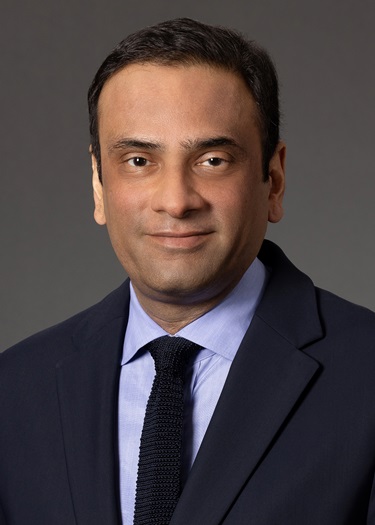We spoke with Sam Gandhi, of Sidley's New York office, about how the office is responding to regional and global business challenges.
You have spent so much of your professional life here.
SG: Almost all of it, yes. Really since 1993, when I started as a securitization associate at Brown and Wood in its Washington office. I moved to the New York office in the World Trade Center in ’96 as an associate in the capital markets group.
Then I briefly left the firm to work as a banker in the principal finance group of the fixed income division at Goldman Sachs. At the time, I worked for the heads of that group, who were Steven Mnuchin, our current U.S. Treasury Secretary, and Pete Briger, who’s now principal and co-chairman at the Fortress Investment Group.
I then came back to the firm after a year. I had a great and rewarding experience at Goldman Sachs, but at that point in my life, I realized that I missed being a lawyer and didn’t really want to be a banker.
What is unique about Sidley’s environment?
SG: What I find unique about this firm is people’s willingness to jump in and help each other out. As soon as we realize that someone can add value and help our client, we get them involved. Our most successful and valuable matters and clients at the firm are the ones where we have a number of people in different disciplines working together to get the right results for our clients.
What is noteworthy about the office culture in New York?
SG: Compared to the firm’s other offices, I’m not too sure there really is, other than everything is harder in New York, right? It’s not just the media and financial center of the world, it’s where the largest and most complicated legal matters are, too. The work is more demanding and it’s a tough city and region to do well in. So lawyers need to be hard-charging to do well here.
What is on the horizon for the office here?
SG: We are working on several efforts to grow the practice. We are looking for more opportunities in commercial litigation, finance, M&A and private equity. Our capital markets practice has always been a crown jewel of our office and has seen continued success. We continually look to expand in those areas in which we do well to increase our market share.
Is Sidley doing anything differently in New York in response to the climate in the country?
SG: Well, I think we have benefitted from the robust markets and appetite for deals. Last year was very busy for us in New York. It was one of our best years, and 2018 so far has been busy again. We see very strong capital markets and a lot of potential deal making. Also, our white collar and investigations practices are still very busy.
So there are more investigations now? It seems more business friendly.
SG: We are still seeing more opportunity in white collar work as a result of a really great global practice in New York, Washington and other offices. That practice is still attracting a great deal of work.
Are there takeaways that prospective clients should know about Sidley’s New York office?
SG: Well, I don’t think a lot of clients know how big we are here and the number of lawyers that we have. We have about 420 lawyers, and another 200 or so staff in this office. We’re the 10th largest law office in the city. We’ve got corporate and litigation depth with a lot of experts in numerous industries.





